Beets, Beta vulgaris, can be a little bit controversial.
Some people love them, and others think of the horrible canned, pickled beetroot slices that were popular sometime back in the early 1980s.
I’ll admit it, as a kid I used to love those soggy slices dripping with vinegar, eaten straight out of a can. But my tastes have moved on since then, and I think modern preparations of beets are much better.
Whether they are sliced raw in a salad, roasted and drizzled in a little balsamic, or made into a rich soup, homegrown beets are delicious and nutritious.
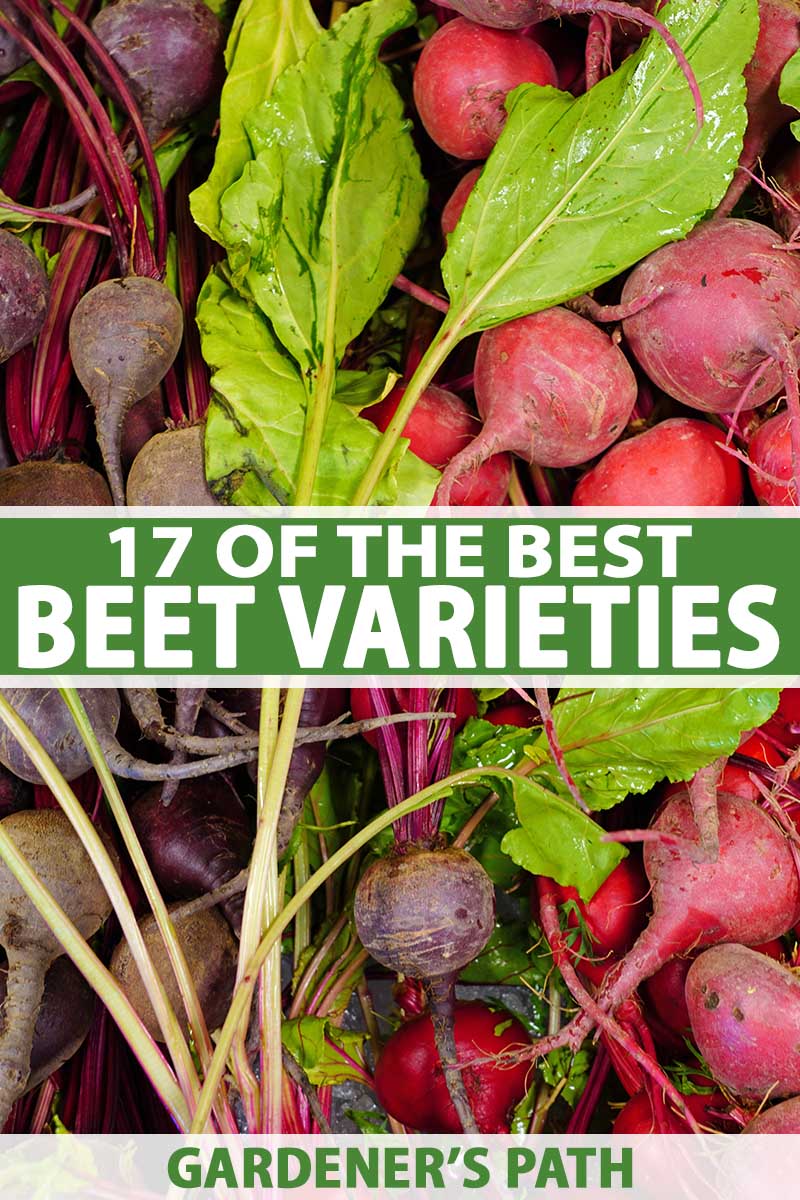
We link to vendors to help you find relevant products. If you buy from one of our links, we may earn a commission.
You’ll get a healthy serving of B vitamins, iron, manganese, copper, magnesium, and potassium in every beet-infused meal.
And it’s not just about the roots, either. Beet tops can be used as a substitute for spinach or Swiss chard – sauteed, steamed, or added to soups and stews.
If you’re convinced that beets deserve a place in your garden, the next question is: what variety to grow?
There are several different cultivars to choose from, and they’re not all ruby-red! There are white, gold, and even pink and white candy-striped varieties.
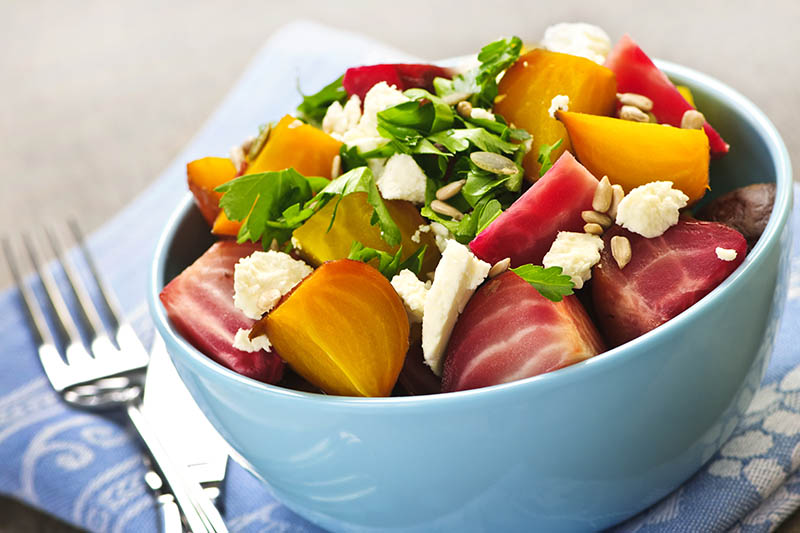
Some heirloom types have been grown for generations, and other hybrid varieties have been selectively bred for disease resistance.
Let’s look at the wide variety of beet types available to grow at home.
Here’s what I’ll cover:
17 of the Best Beet Varieties to Grow at Home
Classic, deep-red beets are the most common type. Their color is the result of a pigment called betalain.
While betalain makes red (along with golden) cultivars the healthiest choices of all, it is also responsible for that hearty taste that either excites or repels those who dine on this vegetable.

Golden varieties are more mild and sweet and have a less “earthy” flavor.
Though they’ve become common in some markets, golden beets remain a real novelty to some – and they serve as an exciting vegetable to grow and add to the dinner table!
Do keep in mind that you will have to sow seeds of golden varieties heavily. Of all of the available cultivars, goldens tend to have the lowest germination rates.
Compared to their scarlet kin, striped cultivars have a bright pink to pale red skin on the outside.
When you slice them open, you’ll find that the flesh is brightly mottled with vivid pink rings or stripes on white flesh, much like a bull’s-eye or peppermint swirl.

White varieties are a popular heirloom gem found in CSA boxes and on market tables. White beets are the mildest, sweetest, and least earthy-tasting of all because they lack betalain, the compound responsible for the pink and yellow pigments found in red and golden varieties.
But keep in mind that this means white varieties have a higher sugar content than their more colorful brethren.
If you’re shopping around for white varieties to plant, you may come across some seed packets labeled as either “sugar” or “forage” beets, possibly sold at a bulk or wholesale price.
That’s because white beets are grown commercially either for processing into sugar or for use as livestock feed. Both can be eaten like any other type of beet when the roots are young and small, and their greens are delicious.
But for sizeable roots that don’t get tough (or incredibly sugary) as they mature, stick with the more pigmented garden-to-table types, or the white varieties bred for non-sugar use described below.
Ready to dig in?
1. Avalanche
‘Avalanche’ is an open-pollinated white cultivar with a sweet, mild flavor. An All-America Selections winner in 2015, the creamy-white roots have all the sweetness of a red beet with no hint of bitterness.
The mild flavor and crunchy texture makes them ideal for slicing raw in salads, and they are delicious roasted or added to soups and stews. ‘Avalanche’ will convert even the most vocal beet-haters in your family into fans. My tip: pretend it’s not a beet when you prepare these.
Another advantage? You don’t have to worry about red stains all over your hands and chopping board!
Round roots are best harvested when they are two to three inches in diameter, after about 50 days. The light green tops can be enjoyed sauteed as a side dish.
You can find seeds available at Burpee.
2. Bull’s Blood
This heirloom cultivar was developed from the French variety ‘Crapaudine’ and introduced in 1986.
Deep purple leaves can be harvested as microgreens to add color to salads, or sauteed like Swiss chard. Roots are deep red, with a sweet, slightly earthy flavor and no hint of bitterness – especially when harvested young.
Roots mature in 55 days and tops can be harvested after just 30 days.
You can find seeds available at Eden Brothers.
3. Chioggia
Also known as ‘Candystripe,’ ‘Dulce di Chioggia,’ or ‘Bull’s Eye,’ this eye-catching heirloom cultivar takes its name from a small fishing town near Venice, in Italy.
From the outside, it has an unremarkable, round “beety” look. But slice it open and ‘Chioggia’ reveals concentric rings of pink and white.
With a delicate, sweet flavor, the unusual pattern adds a pop of color to salads. Cooking causes the ring pattern to fade.
Crispy greens can be harvested after 50 days, but wait 60 days to pull the three- to four-inch candy-cane striped beauties out of the ground.
You can find seeds available at Eden Brothers.
4. Crosby Egyptian
‘Crosby Egyptian,’ sometimes listed as ‘Crosby’s Egyptian,’ is an heirloom cultivar that originated in Germany and was brought to the US as ‘Egyptian Beet’ in the 1860s.
Josiah Crosby, a market gardener in Boston, developed ‘Crosby Egyptian’ with its wide, three- to five-inch early maturing root. It first appeared in James Gregory’s seed catalog in 1880.
The roots have a flattened shape and a sweet yet slightly earthy flavor. Green tops with red stems are delicious harvested young for salads, or sauteed as mature greens.
Quick to mature in just 55 days, plants are known for being cold-tolerant and are ideal for northern gardeners who want an early fall crop.
Find seeds now at Eden Brothers.
5. Cylindra
‘Cylindra’ is an heirloom cultivar, ideal for pickling and canning. Elongated roots with smooth skin and deep red flesh have a sweet, mild flavor with just the slightest hint of earthiness.
The smooth-textured roots grow six to eight inches long and an inch or two in diameter. Sometimes known as ‘Butter Slicer,’ the uniform width is ideal for slicing.
Enjoy ‘Cylindra’ roasted, added to soups and stews, or go old-school and pickle slices in vinegar to the horror – or delight – of your family.
The leaves are reddish-green and have a slightly bitter flavor if eaten raw.
Roots mature in 60-70 days, and tops can be harvested after just 35 days. ‘Cylindra’ is ideal for growing in the smaller garden as the plants take up less space.
Seeds are available at Eden Brothers.
6. Detroit Dark Red
This classic heirloom variety was first introduced in 1892 by D. M. Ferry Seed Company as ‘Detroit Dark Red Turnip.’
But it’s not a turnip, it’s a beet. Deep red, rounded roots with smooth skin are sweet, mild, and tender, ideal for canning, roasting, and slicing raw in salads.
The tops are tender and flavorful, too, with dark green leaves and bright red stems and veins. Harvest baby greens for a pop of nutritious color in salads.
You can harvest the three-inch roots after 60 days, but the greens will delight your palate after just 35 days.
Find seeds available at Eden Brothers.
7. Early Wonder
Also known as ‘Boston Crosby’ and ‘Nuttings Gem,’ ‘Early Wonder’ is, well, an early-maturing heirloom cultivar first introduced to the US in 1911.
This variety is ideal for those who want to harvest abundant greens as well as delicious roots.
The deep red roots are round with a slightly flattened top, and have a sweet, mild flavor. The tops are particularly fast-growing and have a lightly piquant taste, particularly when harvested as baby greens.
Two to three-inch roots will be ready for harvest after just 50 days, and plants are heat and cold tolerant.
8. Golden
If you want to trick your recalcitrant family into enjoying beets but aren’t tempted by the white varieties, then roast up some ‘Golden’ roots with a delicate balsamic glaze.
Also known as ‘Burpee’s Golden,’ this heirloom cultivar was introduced – you guessed it – by the Burpee Seed Company in 1970.
Glorious two-inch golden globes with yellow flesh and a sweet, mild flavor mature in just 55 days. Tender green leaves with yellow stems can be harvested after 40 days.
You can find seeds available at Burpee.
Find more tips on growing golden beets here.
9. Golden Detroit
Sweet and mild, heirloom cultivar ‘Golden Detroit’ produces one to three-inch oval shaped orange-yellow roots that are delicious both raw and cooked.
Light green tops with pale stems have no hint of bitterness and are an ideal addition to summer salads.
Roots mature after 55 days. Leaves can be harvested after 40-45 days.
Seeds are available at True Leaf Market.
10. Lutz Green Leaf
If you like a big root for tossing in your root cellar (do you have a root cellar? If so, I’m jealous!) and a harvest that will see you through the most miserable of winters, then try ‘Lutz Green Leaf,’ aka ‘Winterkeeper.’
You’ll be able to enjoy the six-inch, deep-red tubers pickled, roasted, tossed into soups and stews – and even in salads.
The greens are indeed “green,” and are delicious sauteed in butter and garlic, with a flavor that’s comparable to Swiss chard.
If you want ‘em big, leave them to mature for the full 65 days, or pull them early for baby beets if you really have to.
You can find seeds at Eden Brothers.
11. Merlin
Probably the sweetest of the red-rooted beets, ‘Merlin’ is an F1 hybrid cultivar bred for high sugar content, disease resistance, and both heat and cold tolerance.
In other words, you don’t need to be a gardening wizard to grow these. Crisp when raw, and delectably tender when cooked, ‘Merlin’ will enchant with his exceptional sweetness. Even the glossy, dark green tops are delicious.
Three to four-inch perfectly round roots are ready to harvest after 55 days, and you can enjoy the crimson-stemmed greens after 30-40 days.
Seeds are available at Burpee.
12. Moulin Rouge
‘Moulin Rouge’ is a hybrid cultivar with deep magenta roots that you cancan enjoy both fresh or cooked. With a rich and succulent texture, one- to two-inch globes of gloriousness have a sweet, rich, “beety” flavor.
Baby roots can be harvested after just 35 days, or leave them in the ground for 55-60 days for mature roots.
You can find seeds from Burpee.
13. Red Ace
Calling all Star Wars fans, this one’s for you. Make Freya Fenris jealous and grow your very own ‘Red Ace’ spaceship in the comfort of your own garden.
An F1 fighter jet – sorry, I mean hybrid – an F1 hybrid variety, ‘Red Ace’ is a fast-maturing beet adaptable to a wide range of soil conditions, and is more cold-tolerant than other cultivars.
Smooth-skinned, deep purple, three-inch globes will push up through the soil in just 50 days. Cut them open and the scarlet flesh reveals clear concentric rings, with a mild yet hearty flavor.
Seeds are available from True Leaf Market.
14. Red Ball
Also known as ‘Burpee’s Red Ball,’ this heirloom cultivar has sweet, mild, red flesh and deep purple, smooth skin. Uniformly round three-inch roots are ready for harvest after 60 days.
This variety produces an abundance of particularly tasty greens, which you can harvest young for salads, sautes, and stir-fries.
You can find seeds available at Burpee.
15. Ruby Queen
‘Ruby Queen,’ an heirloom cultivar, was crowned an All-America Selection winner in 1957.
She grows happily in poor soil, and her perfectly round, two to three-inch deep-red roots are especially suitable for canning, with a sweet, mild flavor and toothsome texture.
Her short tops grow to just 10 to 12 inches tall, and roots can be harvested after just 55 days.
Find your seeds from Eden Brothers.
16. Touchstone Gold
‘Touchstone Gold’ is a popular golden hybrid variety, and seeds have an above-average germination rate.
Bright yellow flesh with smooth deep-orange skin is sweet and mild when eaten raw or cooked.
Three-inch roots display clear concentric rings when sliced, and these are ready for harvest after 55 days. Light green tops with yellow stems are tender and ideal for adding to salads or stir-fries.
You can find seeds available from High Mowing Seeds.
17. White Detroit
With all the distinctive taste of a red beet but no staining, ‘White Detroit’ has creamy-white, three-inch roots with a sweet yet hearty flavor.
This heirloom cultivar matures in 55 days and roots can be harvested early for baby beets.
Light green tops are ideal for stir fries and sautes.
Find seeds now at True Leaf Market.
Beets for Everybody!
Is your head spinning from all the choices?
There are quite a few, but when you consider the attributes you’re seeking – flavor, color, timing – you ought to be able to find one or two (or six…) that will be just right for your family!
Remember to consult our beet growing guide to get started.
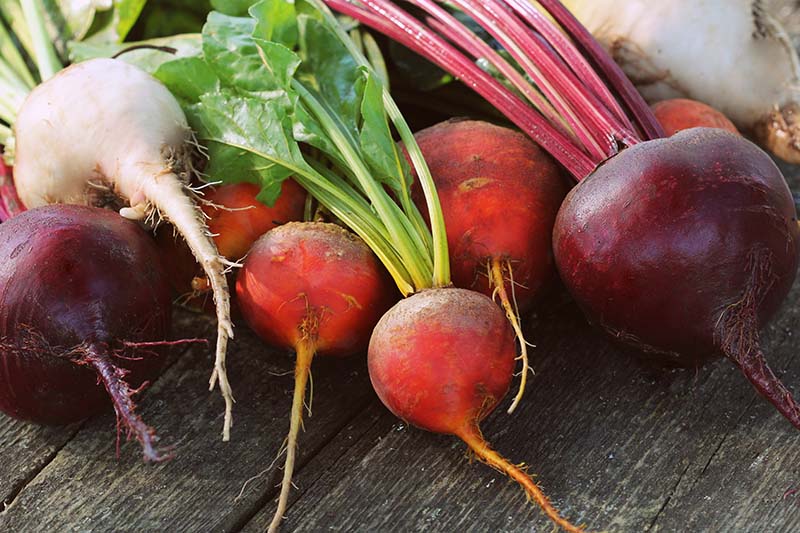
And if you’re not already a family of beet eaters, wouldn’t you just love to introduce a new vegetable to your kids?
We’d love to hear which varieties you’ve tried and how they worked out for you. Tell us what part of the country you live in, and share your beet tales in the comments section below!
And for more information about growing beets, check out these guides next:
- How Harvest Beets
- How to Grow Beets in Containers
- How to Harvest Beet Greens
- 13 Common Beet Pests: Identification, Control Tips, and Prevention
© Ask the Experts, LLC. ALL RIGHTS RESERVED. See our TOS for more details. Originally published on September 7, 2017. Last updated August 21, 2020. Revised and expanded from post originally written by Gretchen Heber. Product photos via Burpee, Eden Brothers, High Mowing Seeds, and True Leaf Market. Uncredited photos: Shutterstock.


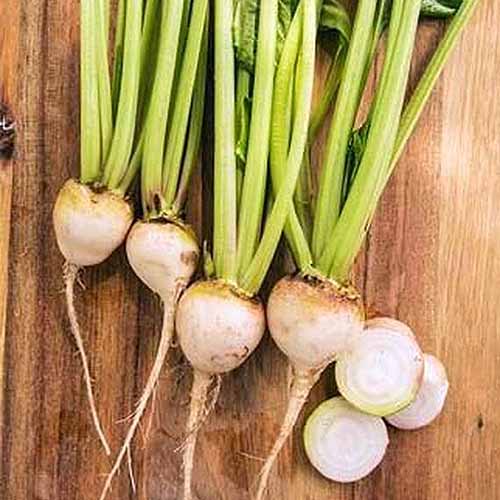


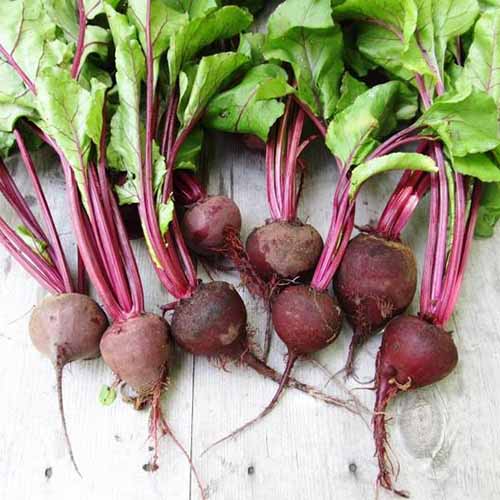
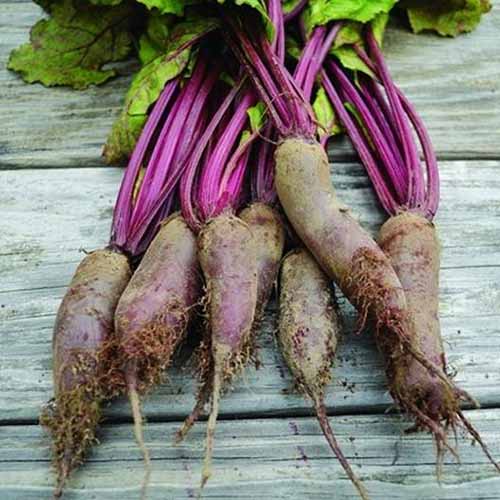


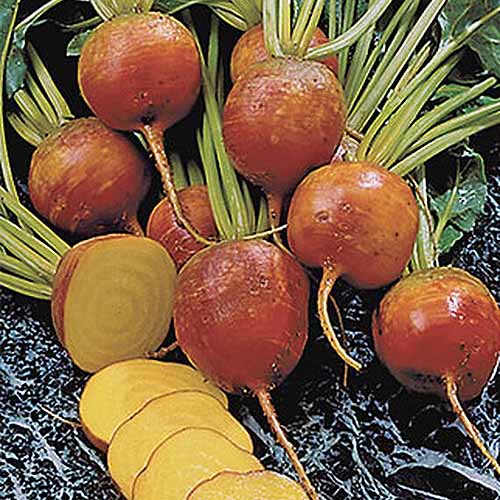
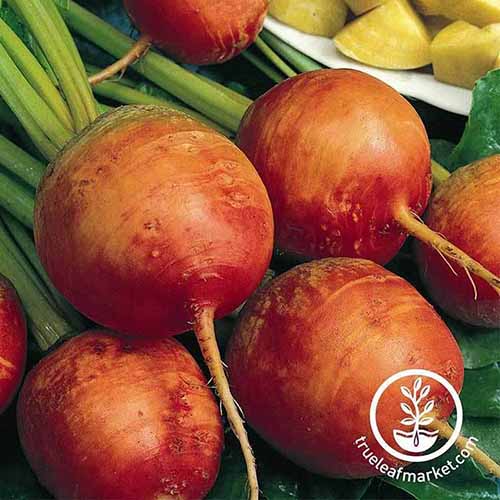
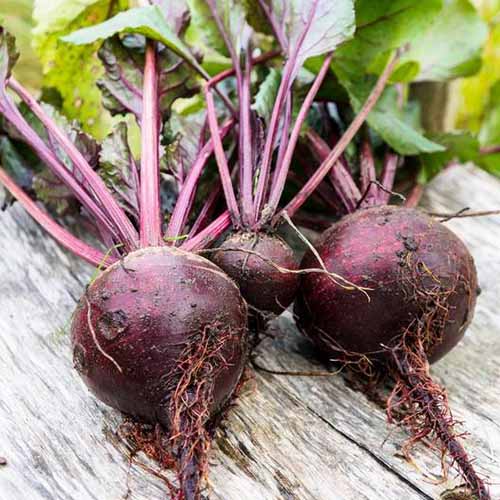

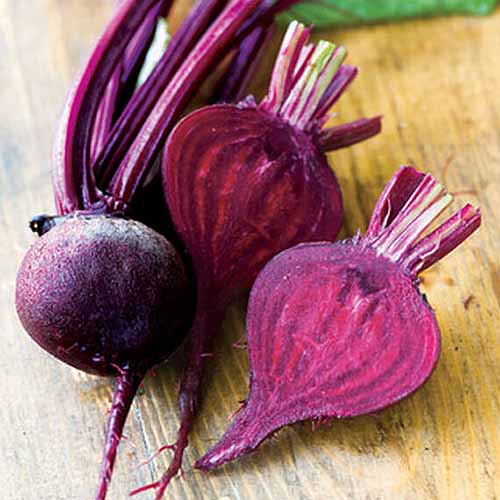
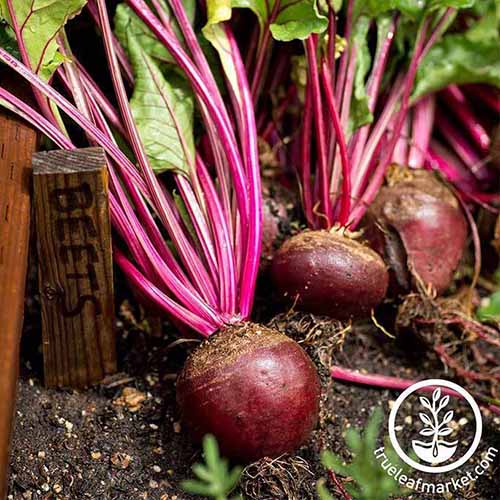

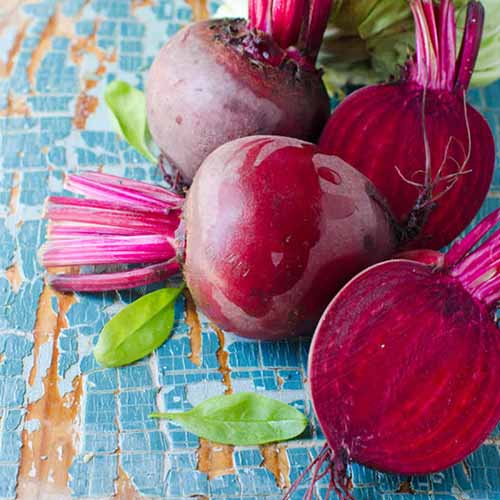
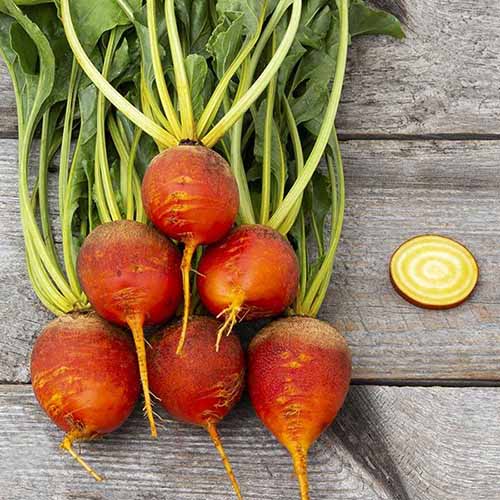

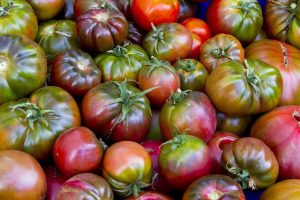

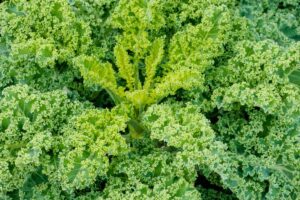
Wow, this is so kewl… I didn’t know there were so many varieties of beets. Thanks for explaining them.
Nice writeup on some common and many other less well known beet varieties.
Change the word sucralose to sucrose under
13. BABY WHITE/ALBINO
Sucralose is a man made non-nutritive sweetener and not found in any plants (to date) but don’t give those GMO plant breeders any ideas!
Thanks for the catch, David! You’re absolutely correct and we’ve updated the article.
I didn’t realize there were so many varieties. It’s just me, so I don’t can in the canners, but I did put all these lovelies in my refrigerator. I love pickled beets.
I tried to put up a picture but it won’t or doesn’t seem to take.
Hi XNavyGal, wow those look awesome! I’m also a massive fan of pickled beets.. I also make them without canning just to keep in the refrigerator – they don’t last long in my house!
How do you pickle without canning?
Quick refrigerator pickles!
So many…had no clue…new to beets